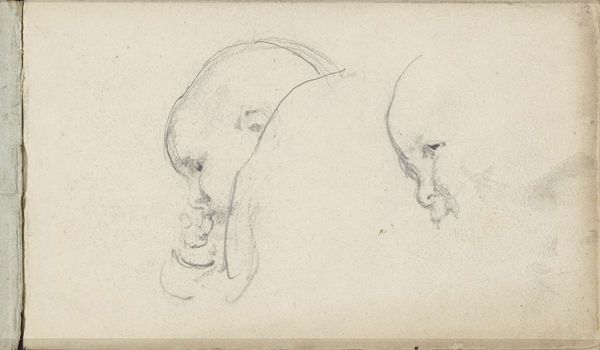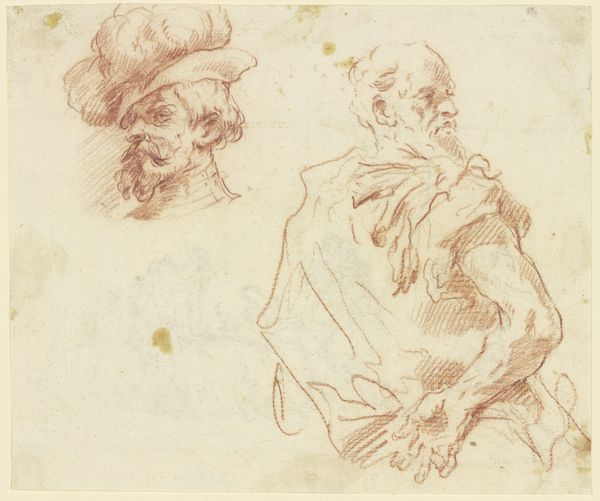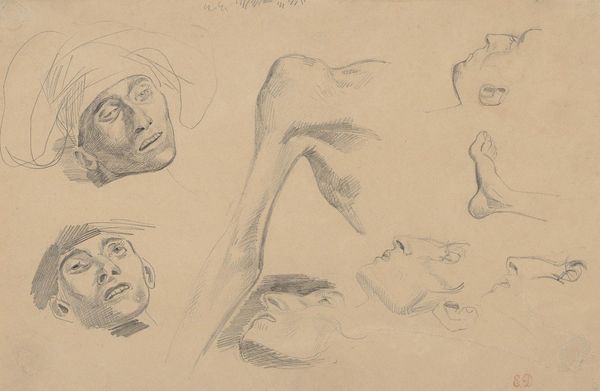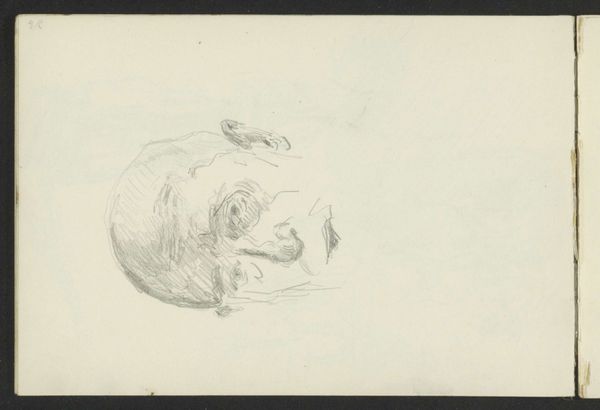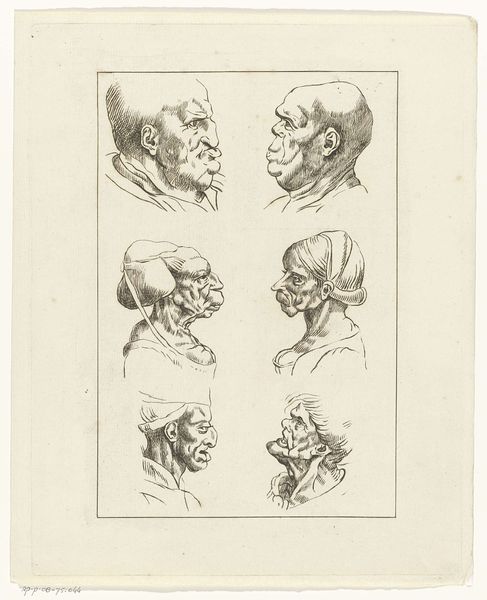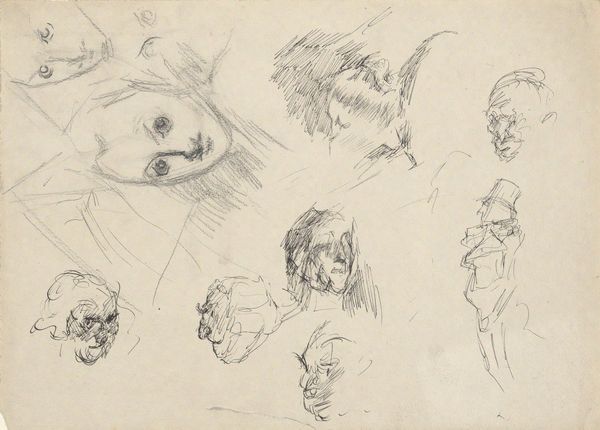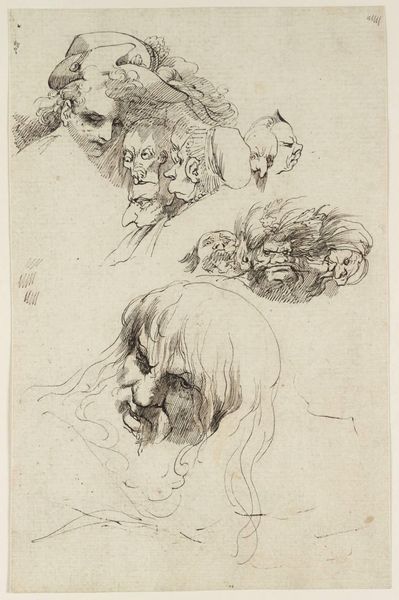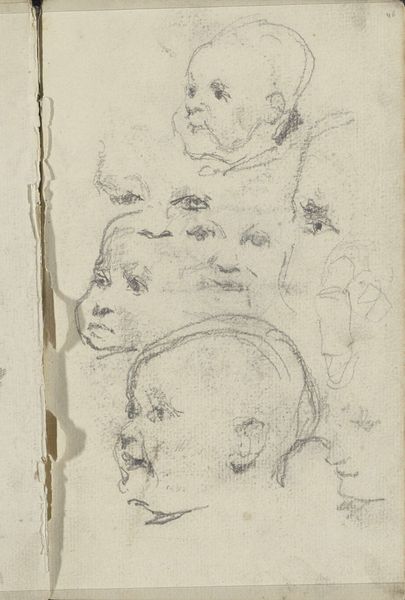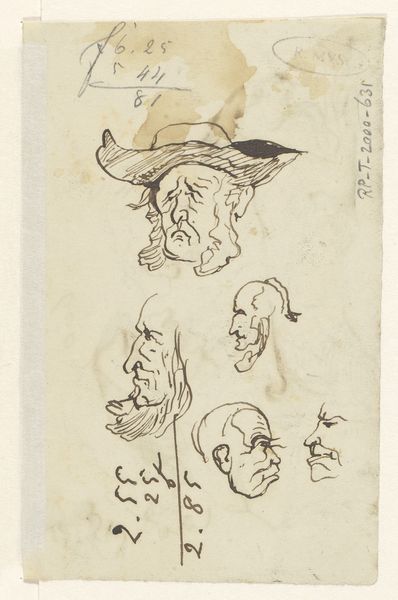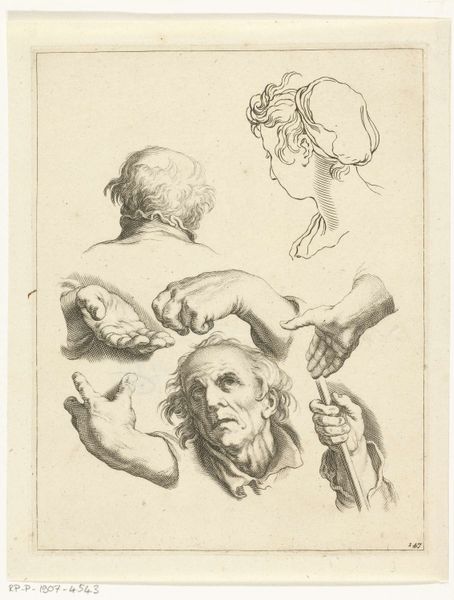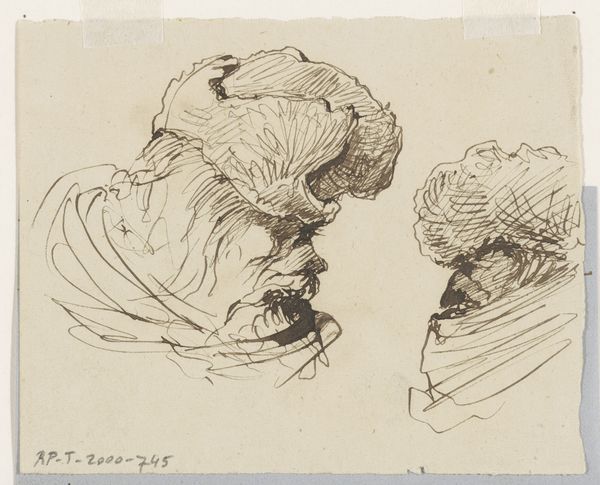
drawing, pencil
#
portrait
#
drawing
#
pencil
#
realism
Dimensions: height 349 mm, width 242 mm
Copyright: Rijks Museum: Open Domain
Curator: This is a sheet of studies rendered in pencil, "Studies van een Apenkop", or "Studies of a Monkey Head," dating from between 1788 and 1839. The hand behind it belongs to Hendrik Voogd, and the work is part of the Rijksmuseum's collection. Editor: The delicacy! My first thought goes to vulnerability, a certain rawness of feeling, as if peering into a private moment of self-reflection, only here, that "self" belongs to another species entirely. It’s really something, the tenderness in Voogd's rendering. Curator: Voogd, primarily known for his landscapes, perhaps sought to explore a different kind of vista here: an inner one. There is, I think, a very human likeness conveyed through the posture and gaze. Editor: Absolutely. Consider the symbol of the monkey across cultures – often representing mimicry, cleverness, and even a touch of the trickster archetype. Seeing Voogd’s monkeys portrayed with this subtle pensiveness, devoid of cartoonish exaggeration, completely inverts the expected narrative. Is Voogd using the animal to explore human traits or, perhaps even, is it something more primal? Curator: It makes you wonder what Voogd might have been thinking. Artists often seek refuge in the non-human to say what cannot be said directly. In an era of revolutions and shifting societal landscapes, perhaps the monkey serves as a coded commentary. Editor: Yes, a mirror reflecting the anxieties and contradictions of humanity. Beyond the historical lens, there’s an undeniably affecting quality about the rendering. It invites consideration beyond the purely cerebral into more subtle registers, provoking empathetic consideration for the other. Curator: Beautifully put. It's fascinating how such a simple pencil drawing can provoke a quiet storm of questions, urging us to rethink not just the artwork, but our relationship with the animal world itself. Editor: Agreed. There’s something quite marvelous when a quiet piece speaks volumes, pushing beyond established meaning. That's precisely what makes encounters like these so resonant and important.
Comments
No comments
Be the first to comment and join the conversation on the ultimate creative platform.
